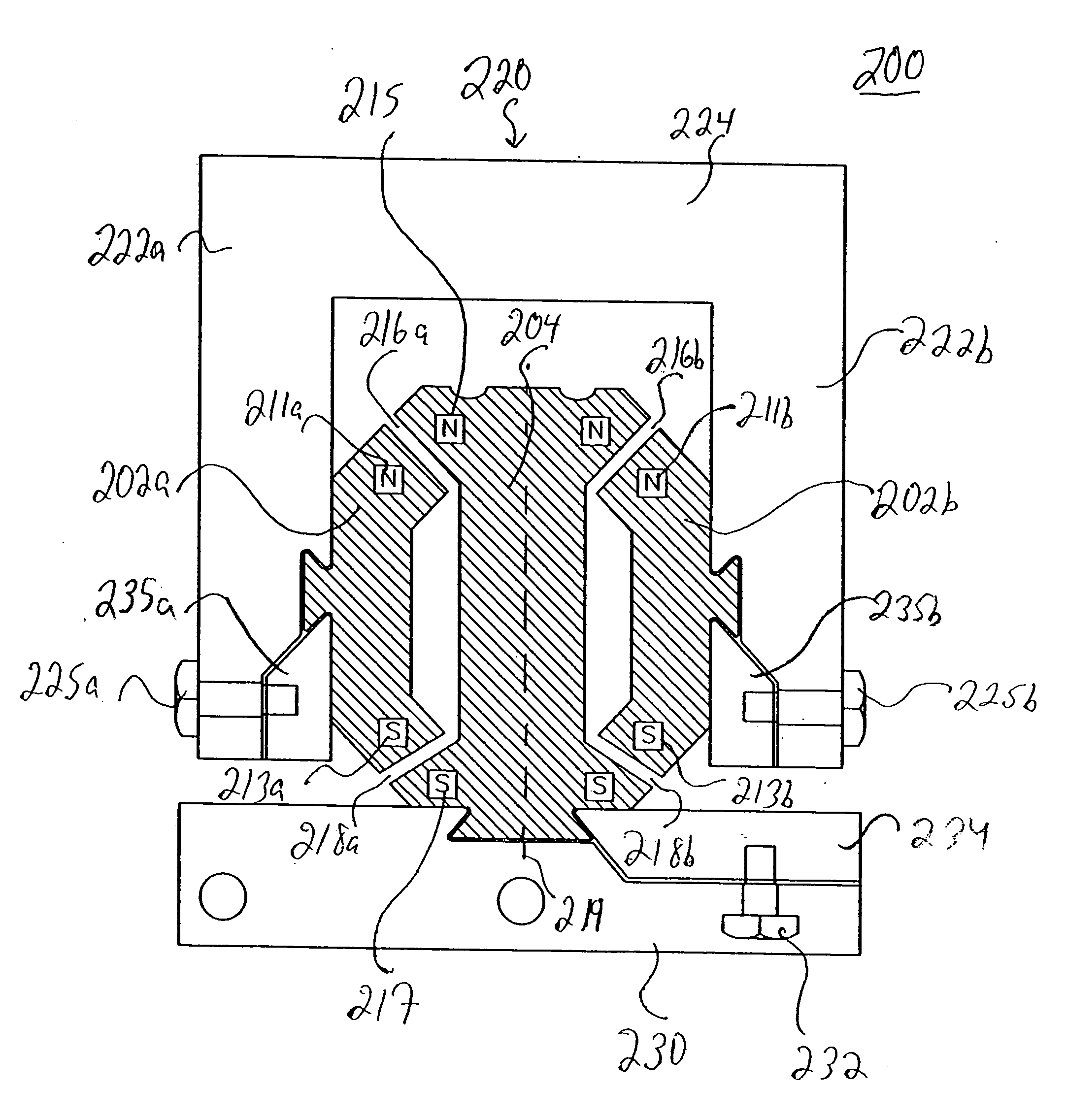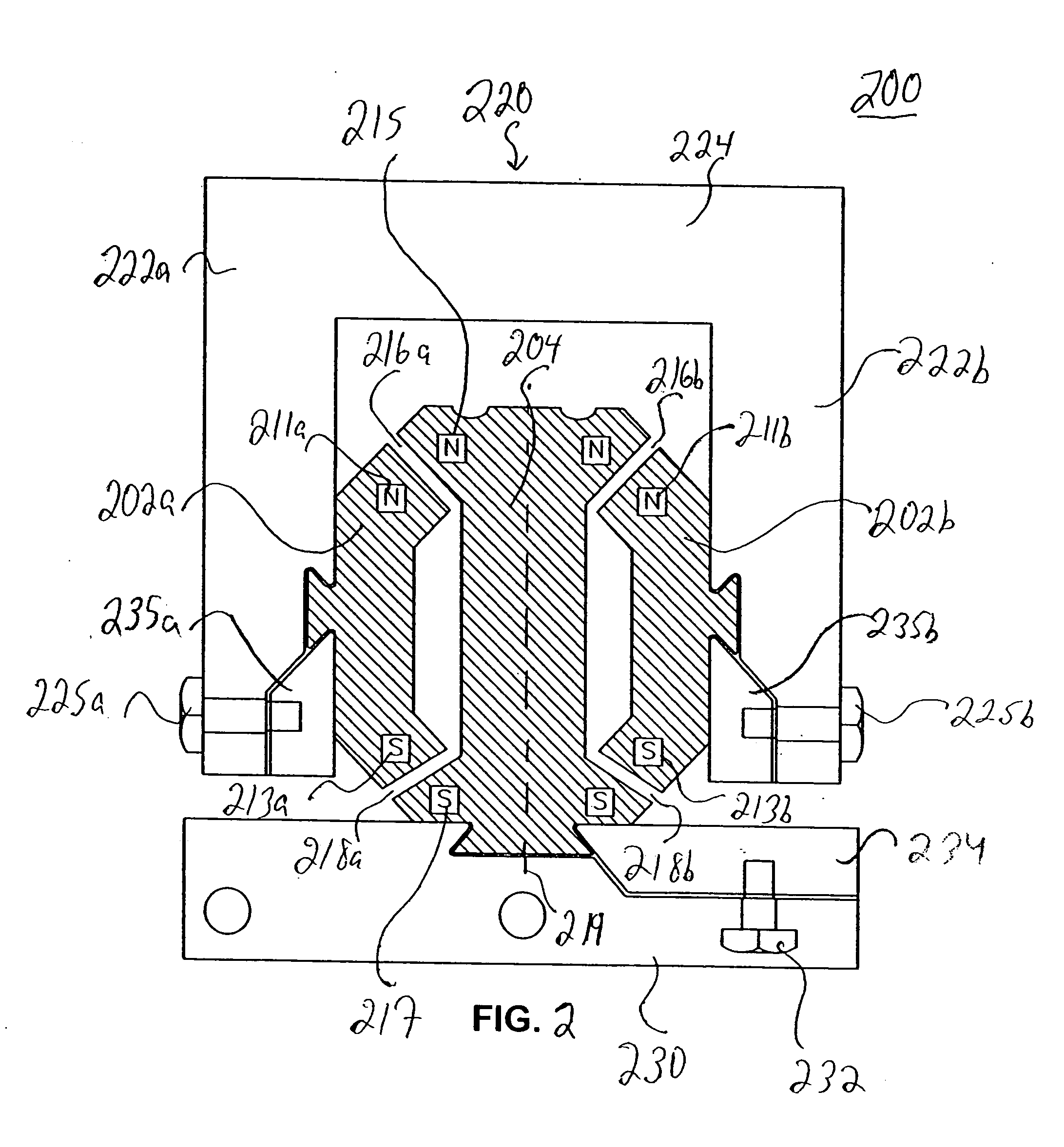Magnetic bearing assembly using repulsive magnetic forces
a magnetic force and bearing technology, applied in the field of magnetic bearings, can solve the problems of axially directed displacement instability, magnetic bearing structure requires a design which may become quite complicated, and friction and wear
- Summary
- Abstract
- Description
- Claims
- Application Information
AI Technical Summary
Benefits of technology
Problems solved by technology
Method used
Image
Examples
Embodiment Construction
[0017] A general embodiment of the present invention is directed to the utilization of repulsive magnetic forces of components of a magnetic bearing assembly. As referred to herein, the components of the magnetic bearing assembly refer to the magnetic elements of the assembly which comprise a magnetic source. A magnetic bearing may consist only of the two components of the bearing which move relative to one another or it may include the two components and other elements, such as a magnetic shield, a retainer ring, a housing, a base or other known elements of magnetic bearing and related assemblies. The magnetic bearing according to the present invention can be used in a wide variety of industrial applications requiring a stable magnetic bearing, such as in gravity-free environments (e.g., outer space), and in any system under gravity requiring such a bearing.
[0018] According to a general embodiment of the invention, the magnetic bearing assembly has an inner magnetic component and ...
PUM
 Login to View More
Login to View More Abstract
Description
Claims
Application Information
 Login to View More
Login to View More - R&D
- Intellectual Property
- Life Sciences
- Materials
- Tech Scout
- Unparalleled Data Quality
- Higher Quality Content
- 60% Fewer Hallucinations
Browse by: Latest US Patents, China's latest patents, Technical Efficacy Thesaurus, Application Domain, Technology Topic, Popular Technical Reports.
© 2025 PatSnap. All rights reserved.Legal|Privacy policy|Modern Slavery Act Transparency Statement|Sitemap|About US| Contact US: help@patsnap.com



